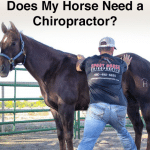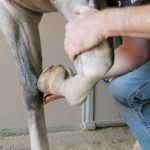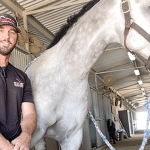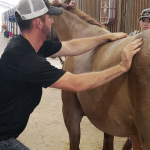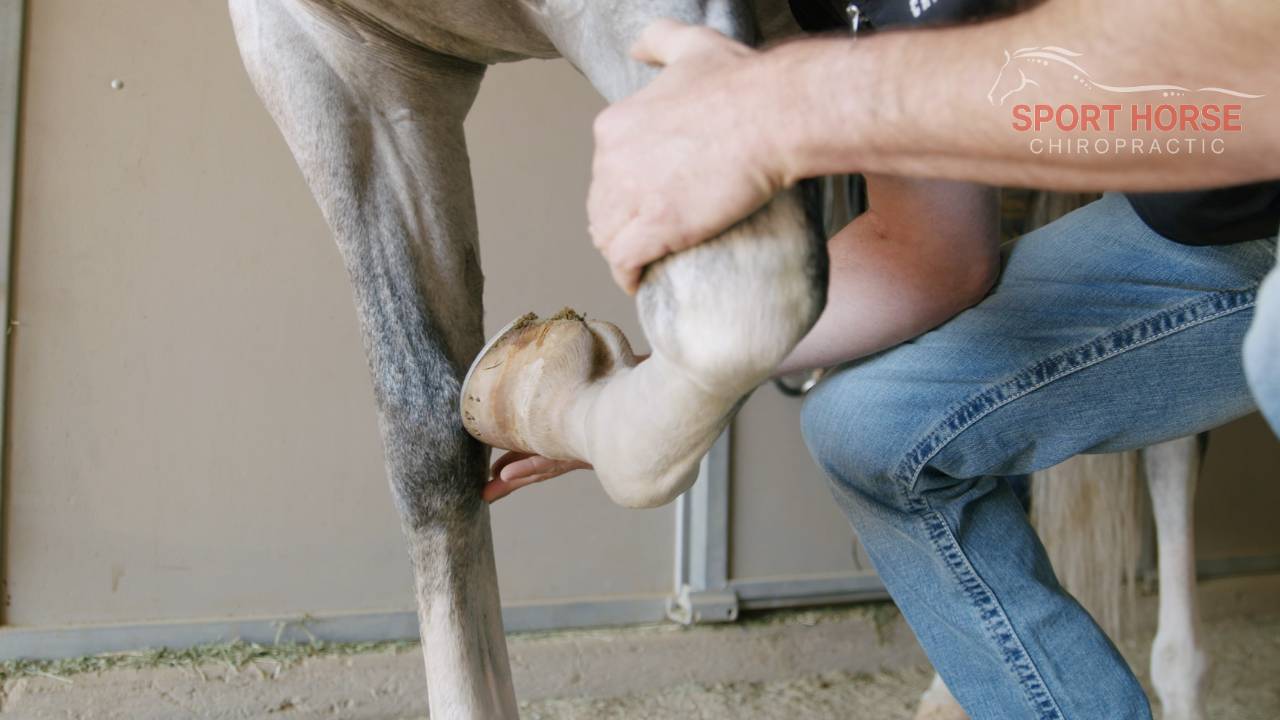
Do Horses Actually Have Knees?
Referring to this joint as a knee is anatomically, functionally, and mechanically incorrect. What is the anatomy of the equine “knee”, how does it differ from an actual knee, and how can it possibly be a…… wrist?
What do you mean it’s not a knee? Of course it’s a knee… Well, anatomy means everything when trying to understand the motion of a joint, and what role it plays in overall body movement. Let’s dive into the anatomy of the “knee” and see why it’s wrong to refer to it as a knee, in the first place.
First let’s look at the anatomy of a knee. We will compare the human knee to a horse’s “knee”. If I ask you to tell me what motion occurs at your knee, you would say something like, “bending” or “flexion and extension”, both of which would be correct. Our knee, is considered a modified hinge joint. So you can think of your knee like a hinge on a door, as it only swings in two directions, forwards and backwards. That’s because our knee is primarily made up of two big bones, the femur (that runs from the hip joint to the knee joint, and the tibia, which runs from the knee joint to the ankle joint. Yes, there is a third bone there, called the fibula, which parallels the tibia (actually attaching to it below the knee joint), but it doesn’t play a role in the hinge motion of the knee itself.
Now, the main feature of the human knee, that we don’t have on any of our other joints, is the knee cap (aka the patella). This bone, that is structurally a part of the quads muscle group, slides up the knee joint during extension of the lower leg, and down during flexion. Take a look…Is there a patella on the front legs of your horse? No there is not. And in order for a joint to be considered a true knee, it must have a knee cap. So, which joints on the horse are considered its true knees? If you answered, stifles, then you would be correct! The knees of the horse are actually its stifles! You probably are realizing now that this makes perfect sense.
Here’s another way to make sense of this. We know where our horse’s shoulders are, right? At the top of the front legs, of course. Then the next joint moving down the leg, is the equine elbow. So working our way down further, does it make sense to have a shoulder, elbow, and then a knee? No… We have a shoulder, an elbow, and then a wrist. It’s the exact same situation with your horse. In fact, in veterinary terms, the joint that we commonly refer to as a knee, is called the “carpus”. And carpus is the latin word for wrist. Makes you wonder where the term, knee, came from.
I bring up the point about this terminology because unless you know what joint you’re working with, you won’t be able to stretch it properly. The vast majority of the time when I see people stretching the front limbs of their horses, all they do is stretch the shoulders. And even then, it’s done mostly into extension. The wrists are rarely ever stretched and loosened properly. Personally I believe that is because we refer to the wrists, as knees. And in doing so, we conclude that it’s just a flexion and extension joint. Now look at your own wrists. Do they just flex and extend? Of course not. They flex, extend, laterally and medially flex, and circumduct (which is to rotate in a circular motion). Your horse’s wrists can do the exact same thing. Only the circumduction is slightly less in the horse.
Of course the primary function of the horse’s wrists is to flex and extend. However, without proper function of the accessory motions, flexion and extension will be reduced. The accessory motions are the rotation, lateral bending, and circumduction. If these motions were not present, your horse would walk like a toy soldier. The accessory motions allow your horse’s lower leg to rotate or “swing” out while it flex and extends. Thus there is a flow or fluidity to the motion, rather than a purely mechanical or robotic feel to it. It is my personal opinion, that it’s these accessory motions, that cause the vast majority of movement issues that arise from the legs. So we must address them during our warmup and stretching routines!
For more informative videos like this, please subscribe to my youtube channel: Sport Horse Chiropractic You Tube Channel
Did you find this information helpful? If so, please share to your social media!
I hope that you have enjoyed this article! If you have any questions about this information, or to schedule a chiropractic adjustment for your horse(s), please contact us at 602–726–5186, or email us at office@sporthorsechiropractic.com. You can also find us on Facebook, Instagram, Youtube, and Twitter.
Thanks for reading!
*This information is intended to be used for information purposes only. Only a trained, certified animal chiropractor or veterinarian should perform chiropractic adjustments on your animals. If your animals are experiencing medical problems, please contact your veterinarian.*
Learn How to Stretch Your Horses!
If you want to learn how to safely and effectively stretch your horses, so that they feel their best and perform optimally, check out my Equine Stretching Masterclass at the link below!
Equine Stretching Masterclass:
